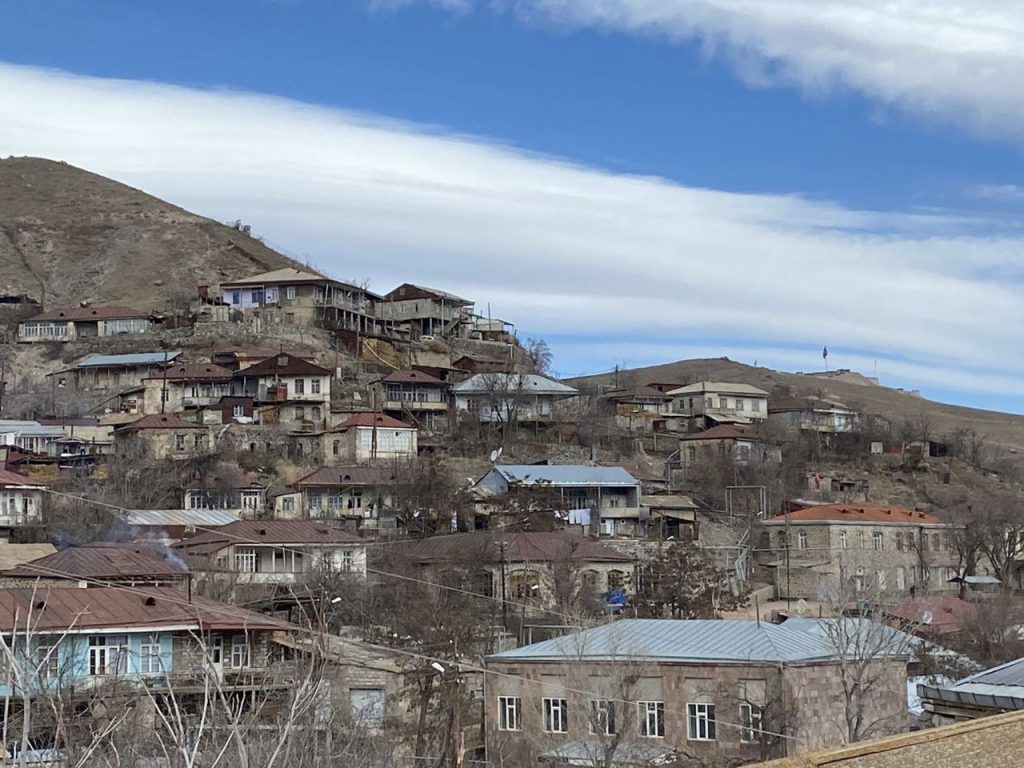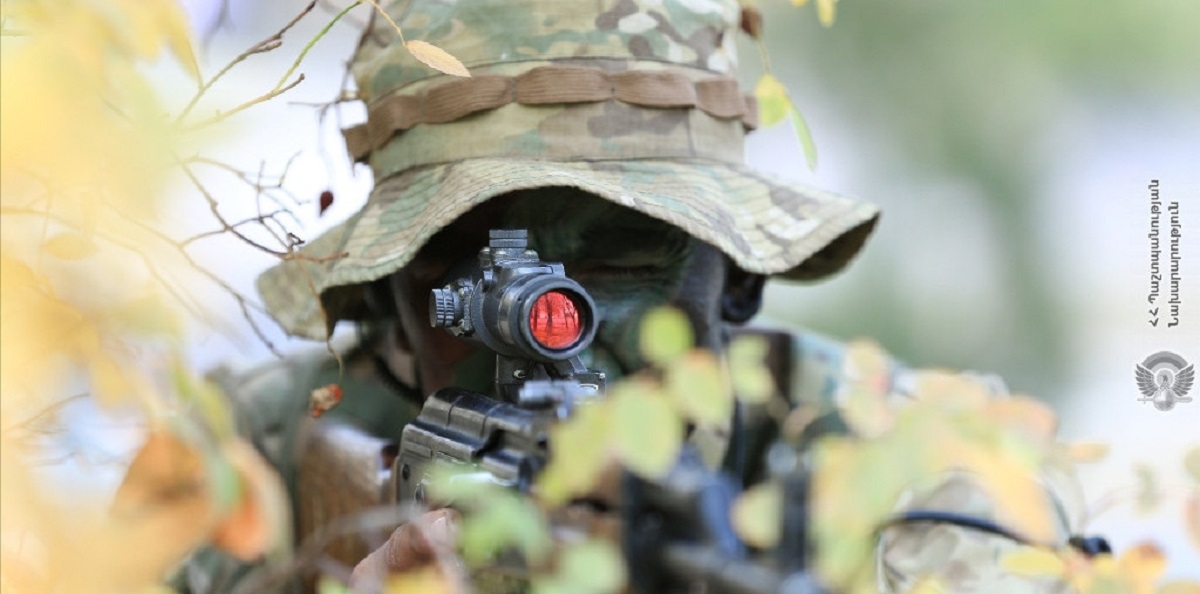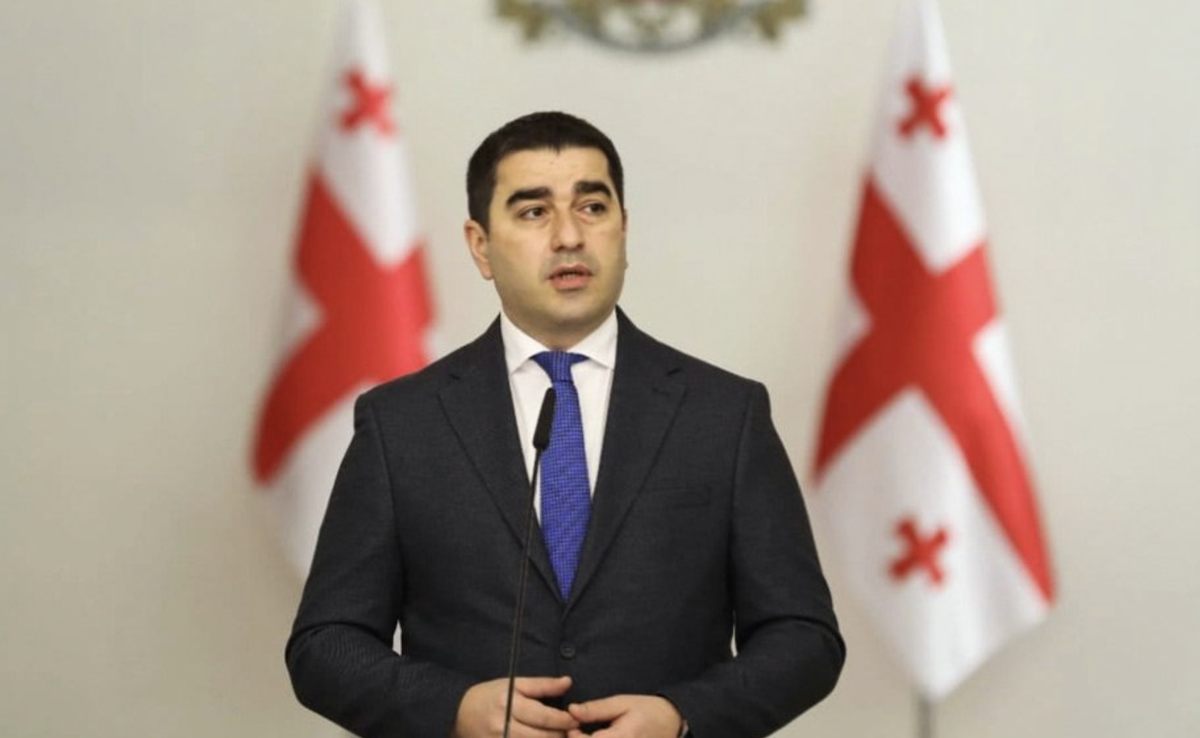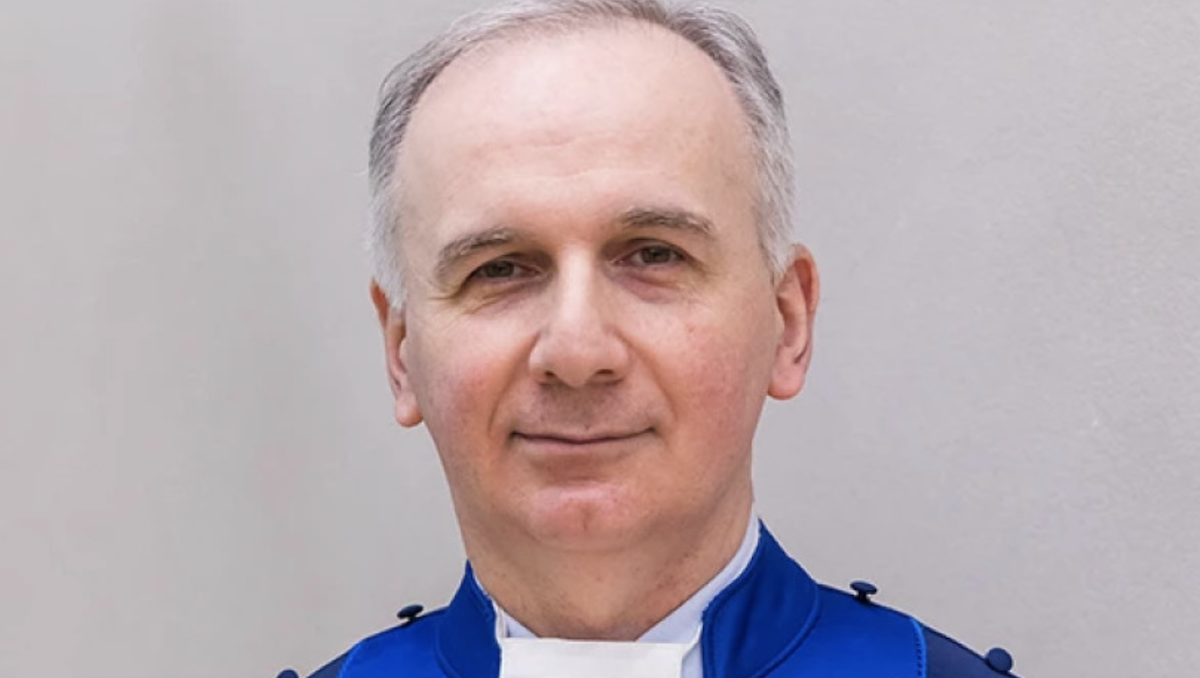Armenian villagers living near the Azerbaijani border demand a security zone
Border villages of Syunik region
After the Karabakh war of 2020, some of the villages of the Syunik region in southern Armenia once again became a part of a region bordering with Azerbaijan. And their inhabitants once again faced the same problems. Now they actually live next to the posts of the Azerbaijani Armed Forces under the constant supervision of the military and cannot move freely. In addition, these villages have lost pastures, which is why their inhabitants are forced to abandon livestock breeding, which was the main source of their income. But the biggest issue is people’s safety. Residents of all border villages are talking about the need to create a security zone around their settlements.
After the 2020 Karabakh war, the territories previously controlled by Armenia came under the control of Azerbaijan. As a result, the old Soviet border between the former Soviet republics became a new line of contact between the parties. In addition, since May 2021, the Azerbaijani Armed Forces have advanced inside the sovereign territory of Armenia and refuse to return to their original positions. Right next to the houses of residents of some villages in the Syunik region, Azerbaijani military posts appeared.
Aravus
There are 12 Armenian and Azerbaijani positions along the entire border of the village – at a distance of 10-20 meters from each other. This significantly reduced its administrative boundaries. In addition, the village, whose inhabitants have always been engaged in cattle breeding, has lost pastures.
The men gathered near the village barns are discussing what they should do, trying to find a common solution to saving their farms.
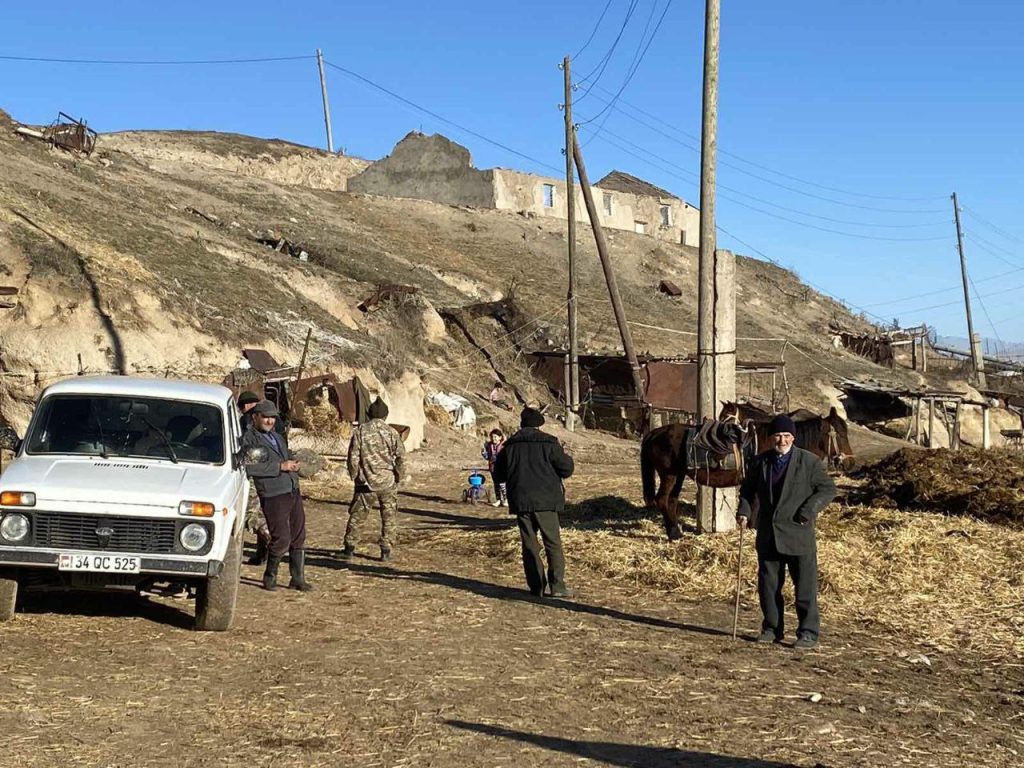
Arthur Bazyan sold forty head of cattle after the war, leaving only ten.
“The problem with pastures has led to the fact that now I buy a stack of hay for 2,000 drams ($4), that is, three times more expensive. There are people who sold a hundred head of cattle, the village lived mainly off cattle breeding. Now we make ends meet on the money from the sale of animals”, says the father of three children.

60-year-old Karine Asryan is in the yard with her grandchildren and daughter-in-law. She says that their family used to have a small livestock farm, but now there are only three cows left:
“There is no pasture. Where to take the cattle to feed? We had forty cows. We lived well. And now I go to Goris to bake lavash to earn money.
And most importantly – how will the issue of our security be resolved? My husband is a shepherd. In the spring of last year, Azerbaijanis approached him, scared him, beat him, despite the fact that he was on our territory. They left only when our soldiers approached. And they say [meaning the Prime Minister of Armenia and his team], “an era of peace is coming, we must live in peace”. Do those who say this believe in it?
Karine’s daughter-in-law is worried about the children, saying that she does not allow them to leave the house after six in the evening.
“Feeling insecure. We, adults, also try to stay at home in the evening, although we know that our soldiers, along with the men of the village, are guarding the border. We will not leave our homeland, but normal living conditions must be created for us. It is critically important to create a security zone near the village. Our parents survived the war, then we, and now our children, who already distinguish any weapon by its sound”, says 32-year-old Meline Arakelyan.

There are 40 households in Aravus. Of the 800 head of cattle, 60 are now left. Azerbaijan controls 64 hectares of communal land.
Zhanna Minasyan, 36, worries about her son and other schoolchildren who walk every morning to school in the nearby village of Teh.
“The road is long – about forty minutes. We’re worried, but what can we do? Deprive children of education? If there was transport, it would take them to school in the morning”.
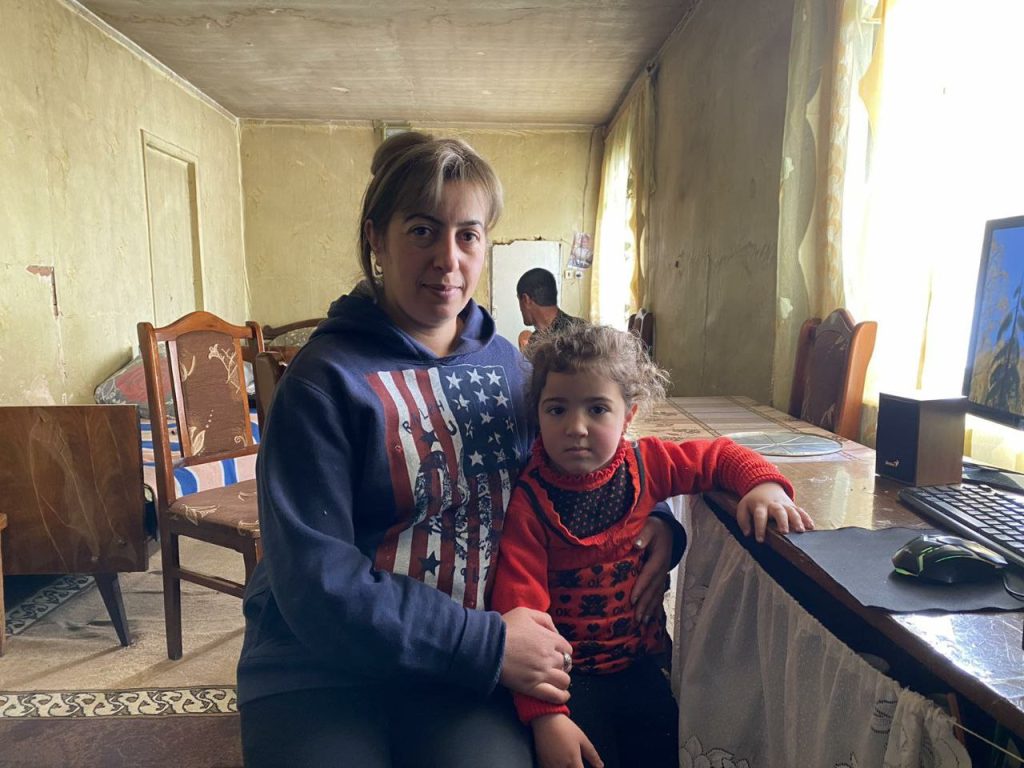
Zhanna’s husband, Garik, brings water every morning on horseback for the animals left in the barn.
“In Aravus, everyone participated in the war, everyone volunteered. Now it’s hard to live here, but still no one leaves”, he says.
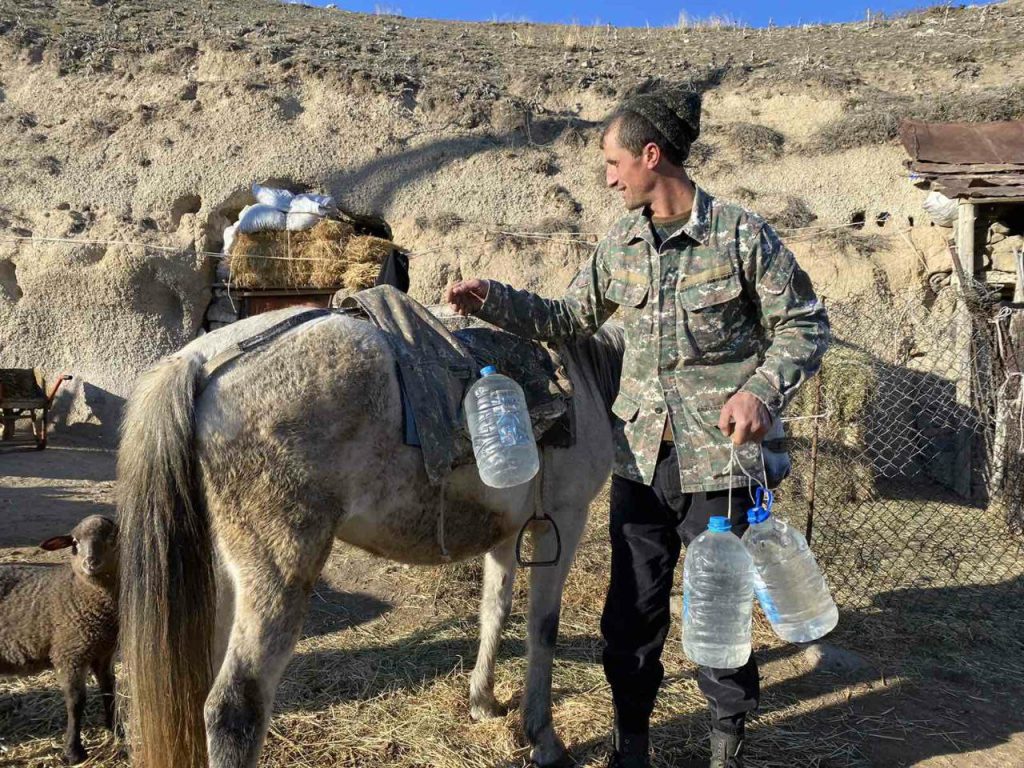
- Armenia may face depopulation amid demographic problems and labor migration
- How the Karabakh war changed my life – a story of Helen from Yerevan
- Unintended economic hit: how Armenia will suffer because of war in Ukraine
Khoznavar
Despite the sunny spring weather, the villagers are in a gloomy mood, there is tension in the air.
“It is getting more and more difficult to live here, we are surrounded by the enemy from three sides. The village is in the gorge, after the war, they [the Azerbaijani Armed Forces] appeared on the heights. As soon as it gets dark, we do not leave the house. We weren’t afraid before, but now we don’t know what will happen – they [the Azerbaijani military] are right above our heads. The posts can be seen from our house”, says Shushik Alaverdyan.
From the posts of the Armenian Armed Forces, they are also closely monitoring the situation on the border. And at night, the men of Khoznavar are also on duty.
“If the enemy tries to launch yet another provocation, they won’t take us by surprise”, says Vahan Zakyan, head of the Khoznavar administration.
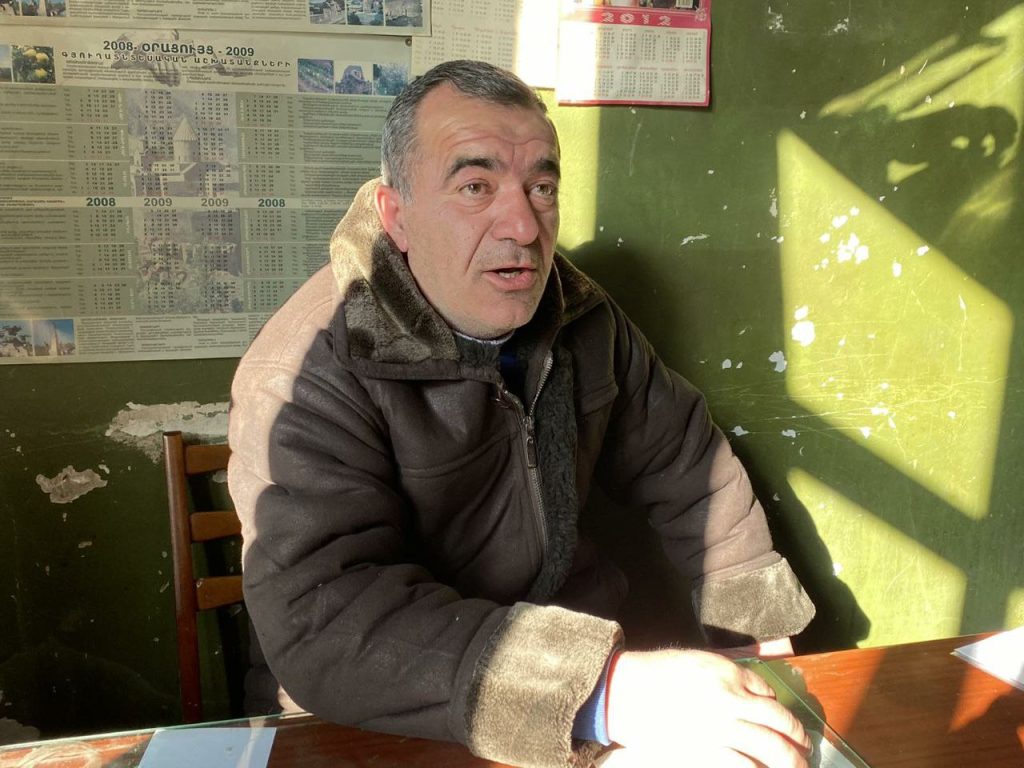
Until December 1, 2020, Khoznavar bordered on the Karabakh village of Tsitsernavank, and now it borders on the Lachin region, which has come under the control of Azerbaijan. The village is located near Lake Sevlich (Black Lake), this is exactly the territory where the Azerbaijani Armed Forces invaded in May last year.
In the village, which was mainly engaged in cattle breeding, after the war, the number of cattle nearly halved.
“Before, people had 10 cows – and then they barely made ends meet. How can they live with 3-4 cows now? Between the Armenian and Azerbaijani positions there is a neutral zone where the pastures of the villagers are located, and we cut grass for livestock from this area. But now Azerbaijanis do not allow grass to be cut there. Above, by the lake, also about 100 hectares remain under their control. These are the lands of our community, people brought grass from there”, says Vahan Zakyan. “And the shepherds are watching closely so that the animals do not cross the border”.
76 families live in Khoznavar, totaling 350 people. Despite the border tension, life in the village continues, and a kindergarten has begun to be built. The school has 38 students.
“There are 6 first-graders in the school. There are no students in grades 8 and 11, that is, there will be no graduation classes this year. 17 teachers who teach our children come from the city of Goris every day,” says the school director Volodya Zakharyan.
Silva Nersisyan, a nurse with forty years of experience, says that she worked during the days of all three wars in Karabakh, and the sounds of fighting are still echoing in her ears:
“In the 90s, the entire village was evacuated, only I remained as a health worker. Then there was a four-day war, then a 44-day war. Every spring we went to the lake to collect horse sorrel, we have many fields in that area, but now we are not allowed to go there. We are surrounded and controlled, but we have nowhere to go, this is our village, our land”.
Most of all, she wants to open an enterprise, workshops in Khoznavar, so that people can earn money.
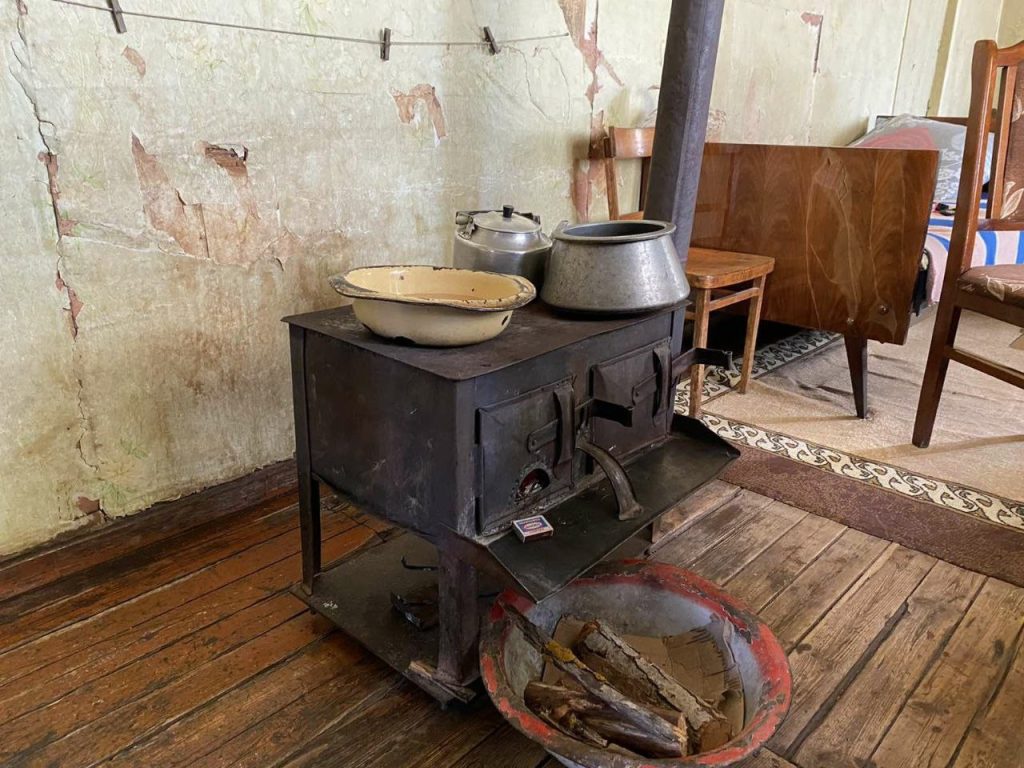
- Gas price increase – a blow to Armenia’s weakened economy
- Armenian PM: “Azerbaijan is trying to legitimize another war”
- Influx of Russians in Armenia: why do they come and will they stay?
Khnatsakh
Serob Adamyan, 67, and his wife were left alone in the house. Their daughters got married a long time ago, and their son works and lives in the neighboring town of Kapan. Serob shows the shelled walls of his house and says:
“They all got shot, and I fixed everything. They sometimes shoot at night, maybe in the air, but this frightens people in the village. Look at the last house of the village, a hundred meters away are the Armenian positions, and a couple of hundred meters, a little higher is where they [Azerbaijani soldiers] are”.
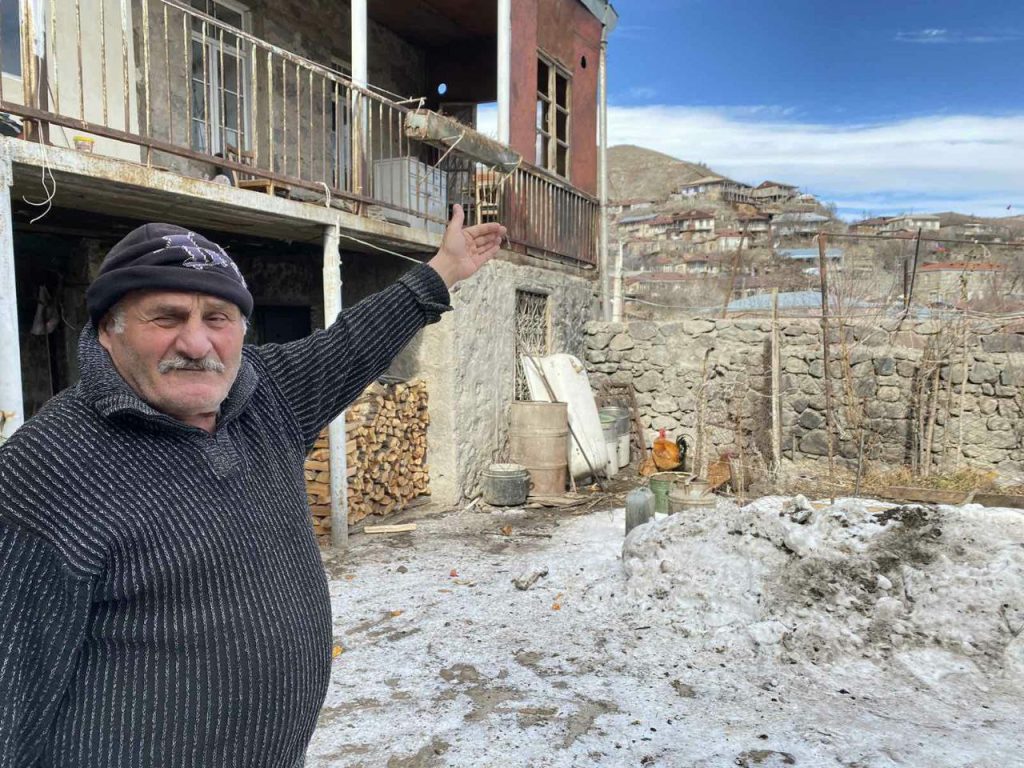
Closest to the Azerbaijani post is the village school.
“The school is right in the firing line. But neither teachers nor students dwell on this. It cannot be said that there is no fear at all, after all, there is an enemy there. But we know that we also have posts there. We don’t cry, we don’t complain, the situation has developed independently of us, we are adapting,” says Artavazd Abrahamyan, director of the school.
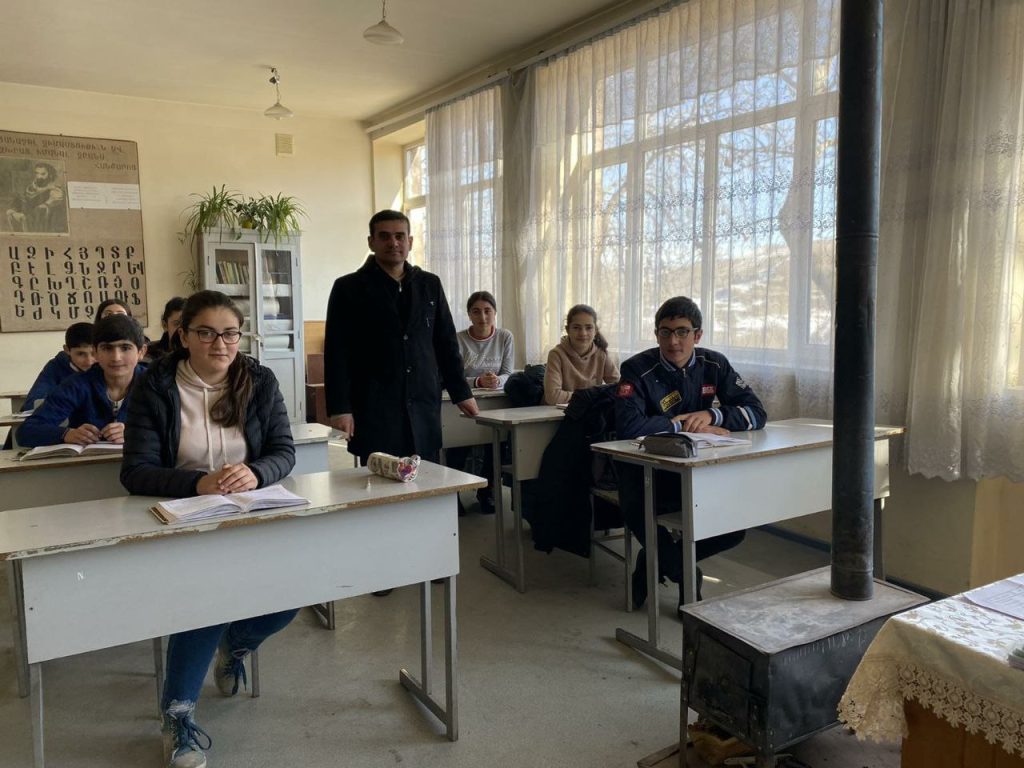
There are 158 families, 820 inhabitants in this village. The border with Azerbaijan here stretches for 25 kilometers.
“It is less than 200 meters from our house to their posts”, says the head of the local administration, Seyran Mirzoyan.
A map of the pastures of Khnatsakh hangs on the wall of the village council, on which “remove from the list” is marked in pencil on some. This is about the lost pastures of the village. According to the village headman, about 22 hectares of land came under the control of Azerbaijan:
“We need a neutral zone. When it’s getting dark – we don’t let the children out of the house. Walking around the village in the evening hours is no longer safe. The gardens of many residents are in an abandoned state, as they are very close to the Azerbaijani positions”.
- Enclaves – islands of Armenian-Azerbaijani confrontation
- Fleeing Russia to Armenia – alternative for people and companies amid Russo-Ukrainian war
- Residents of South Armenia hope for tourism renaissance in the aftermath of second Karabakh war
The topic of conversation between the men who gathered at the village council is the war, because of which their lives have been turned upside down.
“The state is obliged to resolve the issue of the buffer zone. We are worried, but what can we do? Is there a place for me in Yerevan? We will save our village. Life was spent in the wars, and even now it has not ended. Let the era of peace begin. We do not mind. Who doesn’t want peace?”, Surik Gasparyan says.
Despite the problems and the world that has not yet established itself, they are thinking about the development of tourism.
“If we correctly present the possibilities of our village to tourists, they will certainly come. There are very beautiful places here. We have caves where our ancestors lived, we have an old guest house, we have to build new ones, try to develop the B&B culture”, says Artavazd Abrahamyan.
The headmaster of the local school is convinced that in order to save the village, it is necessary to think about an alternative to pastoralism:
“We need to develop poultry farming. This business does not require pastures and has been profitable since the day it was founded. We need to breed rabbits. People are looking for work outside the village, they want to go to Kajaran, work there in the mine to get paid. They do not think that it is possible to establish a business here. I think about such projects because I will live here and protect my village”.
